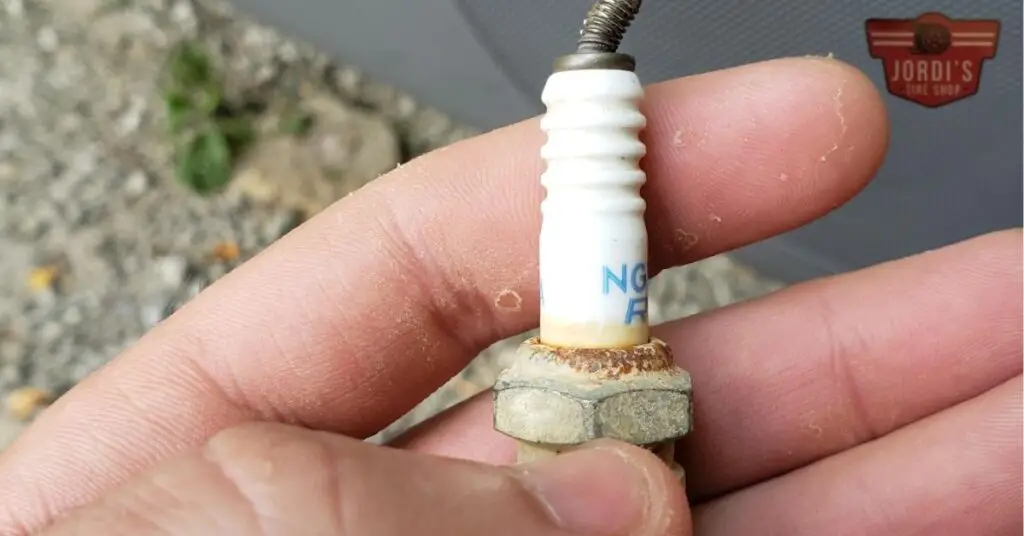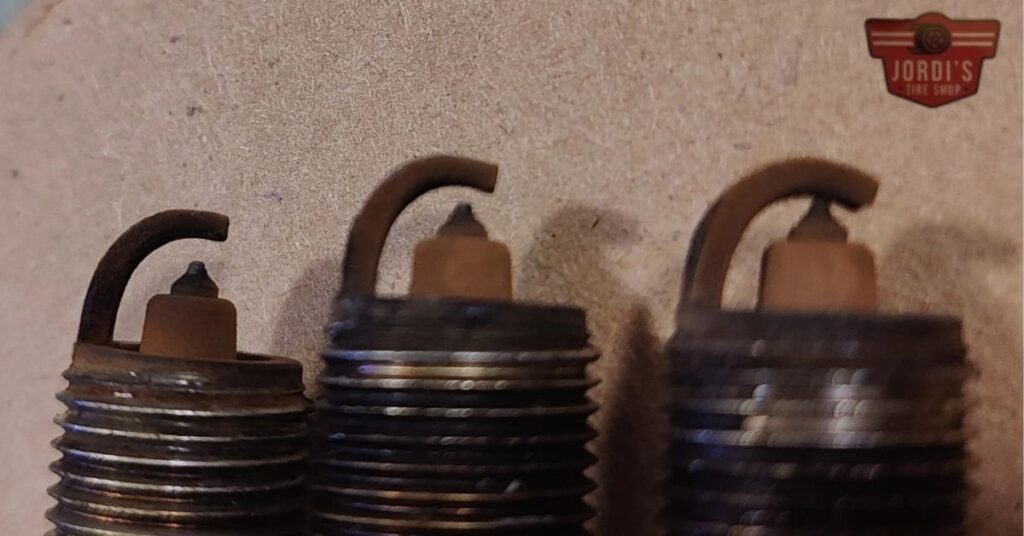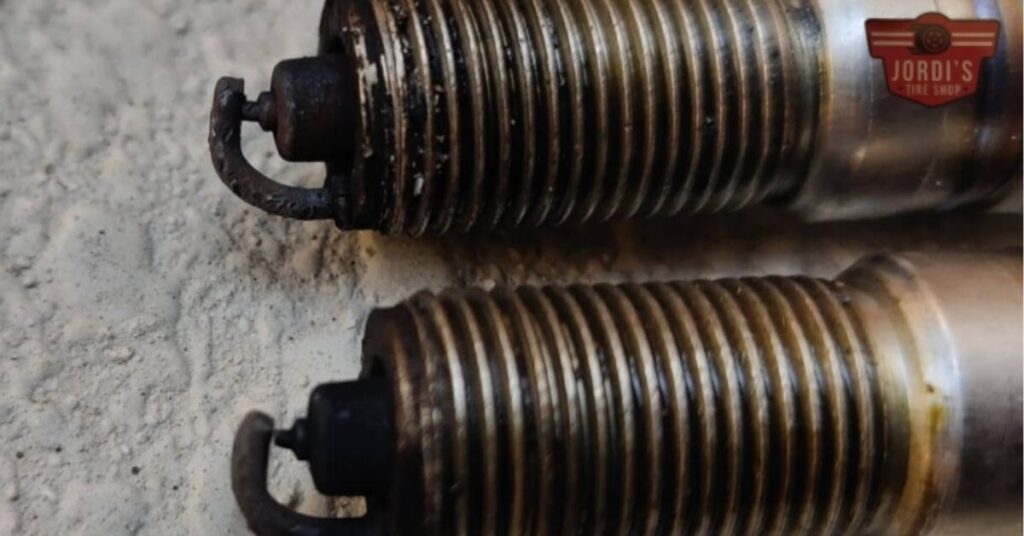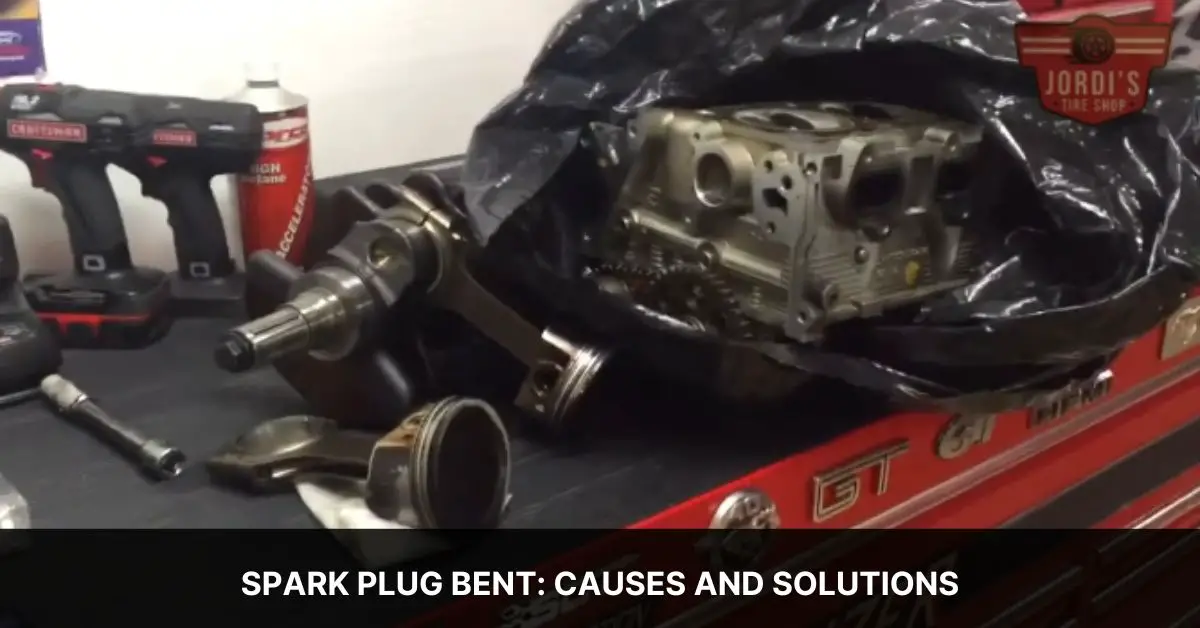Ever stumbled upon a bent spark plug and wondered how it got that way? We’ve all been there. It’s a small component, but its condition can tell us a lot about the health of our vehicle. Whether you’re a seasoned mechanic or a curious car owner, understanding the causes and implications of a bent spark plug is crucial.
Let’s dive into this seemingly minor issue that can have major consequences. From affecting engine performance to potentially leading to costly repairs, we’ll explore why it’s important not to overlook this tiny but mighty part of your car. Join us as we uncover the mysteries behind bent spark plugs and how to address them, ensuring your ride runs smoothly and efficiently.
Understanding the Basics of Spark Plugs

Building on our discussion about the importance of spark plug conditions and how a bent spark plug can disrupt a vehicle’s performance, let’s delve into the fundamentals of spark plugs. Understanding these components’ role in an engine’s operation clarifies why their condition, including any bending, is crucial.
Spark plugs are instrumental in a vehicle’s ignition system. They ignite the air-fuel mixture in the combustion chamber, leading to the engine’s power output. Positioned at the heart of the combustion process, spark plugs must withstand extreme temperatures and pressures. Their durability and design are vital for an engine’s efficiency and performance.
Each spark plug features several parts: the terminal, insulator, ribs, shell, hex, threads, gasket, electrodes, and the gap. The condition of these parts, especially the electrodes and the gap between them, directly influences the engine’s performance. The gap determines the spark’s strength, crucial for efficient combustion.
A spark plug’s function makes it clear why a bent component is a problem. If the electrodes are bent, this can alter the spark gap, weakening the ignition of the fuel-air mixture. Consequently, the engine might misfire, reduce in power, or even fail to start. In severe cases, this misfiring can lead to unburnt fuel entering the exhaust system, causing damage to the catalytic converter—a costly repair.
Proper maintenance and regular inspection of spark plugs are therefore essential. Identifying and rectifying issues like bending early prevents further engine damage. Replacing spark plugs at recommended intervals, or when signs of wear and damage are evident, ensures the longevity and performance of the vehicle.
Through understanding the basics of how spark plugs function and their pivotal role in a vehicle’s engine, it’s easier to appreciate the significance of keeping them in good condition, including preventing or addressing bending. This understanding forms the foundation for effective vehicle maintenance and troubleshooting.
Common Causes of a Bent Spark Plug

Building on the critical role of spark plugs in vehicle performance, it’s essential to identify what can cause a bent spark plug. These small components are pivotal in ensuring the engine runs smoothly, and understanding the reasons behind a bent spark plug can help in preventing potential issues.
Incorrect Installation tops the list of common causes. Handling spark plugs with care is crucial during installation. Applying excessive force or using the wrong tools can easily damage the plug’s delicate structure, leading to bending.
Accidents or Physical Impact can also be at fault. In some instances, a bent spark plug might result from a direct impact to the engine area. This could be due to accidents, dropping heavy objects on the engine, or even aggressive off-road driving that jostles the vehicle’s components.
Manufacturing Defects, although less common, can contribute to this issue. Even new spark plugs might come with flaws straight from the factory. These defects could lead to weaknesses in the plug’s structure, making it more susceptible to bending during normal engine operation or installation.
Engine Misalignment is another technical aspect that can cause bending. If the engine or the spark plug socket is not correctly aligned, inserting the spark plug could lead to improper fitment and, consequently, bending.
Lastly, Overheating of the engine can contribute indirectly. Excessive heat can cause expansion in the metal components of the engine, including the area around the spark plug. This expansion may put undue pressure on the spark plug, potentially leading to bending over time.
Identifying and mitigating these causes can significantly extend the lifespan of spark plugs, ensuring engines perform optimally and continue to run smoothly.
Symptoms of a Bent Spark Plug
Moving from the common causes of bent spark plugs, it’s crucial to recognize the symptoms that might indicate such an issue is at play. Identifying these signs early can save us from more significant engine problems down the line.
- Engine Misfires: The most immediate symptom we might notice is engine misfiring. A bent spark plug disrupts the spark needed to ignite the fuel in the cylinders, resulting in incomplete combustion.
- Rough Idling: Our vehicle might idle rougher than usual. This rough idling is often because the engine isn’t running on all cylinders, a direct consequence of improper spark plug operation.
- Decreased Fuel Efficiency: If our spark plug’s positioning is off, even slightly, it can lead to poorer fuel efficiency. We’ll find ourselves visiting the gas station more frequently.
- Difficulty Starting the Vehicle: A bent spark plug can make starting the engine a challenge. The compromised spark affects the engine’s ability to ignite the fuel-air mixture efficiently.
- Unusual Engine Noises: Knocking or pinging sounds from the engine area might become more prevalent. These sounds occur due to irregular combustion cycles, a result of the misaligned spark plug.
Understanding these symptoms helps us take timely action, such as inspecting the spark plugs or consulting a professional mechanic. Addressing a bent spark plug early prevents further damage, ensuring our vehicle remains in optimal running condition.
Diagnosing a Bent Spark Plug

After understanding the importance of bent spark plugs and recognizing the symptoms they present, the next step is diagnosing them. Diagnosing a bent spark plug involves a few key steps that confirm the condition and help identify the best course of action to take.
Visual Inspection
First, we conduct a visual inspection of the spark plug. Bent spark plugs typically exhibit physical damage that is noticeable upon examination. Signs include bent electrodes or damage to the ceramic insulator. Seeing such damage requires immediate action, as it directly impacts engine performance.
Checking Engine Codes
Next, we check for engine codes. Modern vehicles come equipped with onboard diagnostics (OBD) systems that trigger codes when there’s an engine issue. If a bent spark plug affects engine performance, the OBD system might generate a specific code that indicates a misfire or other related problems, guiding us towards the issue.
Conducting a Misfire Test
Misfire tests are a more hands-on way to diagnose bent spark plugs. By temporarily disconnecting each spark plug in turn and observing the engine’s response, we can identify a change in engine performance linked to a specific plug. If the engine runs smoother when a particular plug is disconnected, it might be the culprit.
Using Specialized Equipment
In some cases, specialized diagnostic equipment is necessary to diagnose a bent spark plug accurately. Equipment like compression testers and leak-down testers can help assess a cylinder’s health and indicate if a bent spark plug is affecting engine compression or causing leaks. Such tests provide clear evidence of internal engine problems that might be related to or causing bent spark plugs.
In diagnosing a bent spark plug, it’s essential to combine these methods for a comprehensive assessment. This ensures we identify not just the presence of a bent spark plug but also the underlying issues that may have caused it. Once diagnosed, taking the appropriate steps to address the issue can prevent further engine damage and restore optimal performance.
Preventive Measures and Maintenance Tips

Following our dive into diagnosing bent spark plugs, we’ll explore how to prevent this issue and maintain your vehicle’s engine in top condition. Preventing bent spark plugs not only avoids unnecessary engine damage but also ensures your car runs smoothly and efficiently.
- Regular Inspection: Inspecting spark plugs regularly is key. This can reveal early signs of wear or bending, allowing for timely replacement before more serious problems arise. Manufacturers often recommend specific intervals for checking spark plugs, but inspecting them with each oil change can provide good preventative maintenance.
- Proper Installation: Ensure spark plugs are installed correctly and with the correct torque. Over-tightening can cause the plug to bend or damage the threads, while under-tightening might lead to poor engine performance. Using a torque wrench ensures that spark plugs are neither too tight nor too loose.
- Using Quality Spark Plugs: High-quality spark plugs are more resistant to bending and wear. They may come at a higher upfront cost but investing in reputable brands pays off in the long run by providing better performance and reducing the likelihood of engine issues.
- Engine Tune-ups: Regular engine tune-ups help maintain the overall health of your car’s engine. Tune-ups often include spark plug checks and replacements, ensuring your engine operates efficiently and potentially catching any issues before they become serious.
- Avoiding Engine Knocking: Engine knocking can lead to bent spark plugs. Using the right fuel grade for your vehicle, as recommended by the manufacturer, can prevent knocking. Also, addressing any engine knocking sounds promptly by seeking professional help can prevent spark plug and other engine issues.
Implementing these tips into your maintenance routine can greatly reduce the risk of experiencing bent spark plugs. Not only does this ensure better engine performance, but it also extends the lifespan of both your spark plugs and engine.
Choosing the Right Replacement Spark Plugs
After identifying and understanding the causes and symptoms of bent spark plugs and taking steps toward preventing them, selecting the correct replacement spark plugs becomes crucial for maintaining your vehicle’s engine performance. Choosing the right spark plugs involves considering several key factors to ensure compatibility and optimal functioning.
Type and Compatibility
First, check your vehicle’s owner manual for the recommended spark plug type. Manufacturers specify this information, optimizing performance and fuel efficiency. Compatibility is paramount, as the wrong type can cause misfires or even damage.
Material
Spark plugs come in different materials such as copper, platinum, and iridium. Copper plugs, while less expensive, have a shorter lifespan. Platinum and iridium plugs, however, offer greater durability and performance. For vehicles requiring high performance, we suggest iridium or platinum options, although they come at a higher cost.
Heat Range
Selecting a spark plug with the appropriate heat range for your engine’s operating conditions is essential. The heat range indicates the spark plug’s ability to dissipate heat from the combustion chamber. Use the manufacturer’s recommendation or consult with a professional if unsure, as an incorrect heat range can lead to engine issues.
Gap Size
Ensure the spark plug gap aligns with your vehicle’s specifications. The gap, or distance between the ground electrode and the center electrode, affects the spark’s ability to ignite the air-fuel mixture in the combustion chamber. While some spark plugs are pre-gapped, verifying or adjusting the gap to meet your engine’s requirements is advisable.
By considering these factors, you can select the best replacement spark plugs, restoring your vehicle’s engine to its optimal performance. Regular maintenance and timely replacement of spark plugs prevent issues like bent spark plugs, ensuring your vehicle runs smoothly and efficiently.
Conclusion
We’ve walked through the journey of understanding bent spark plugs from recognizing the problem to taking steps to prevent it. It’s clear that keeping our vehicles running smoothly isn’t just about addressing issues as they arise but also about being proactive in our maintenance approach. By choosing the right spark plugs and ensuring they’re installed correctly, we’re not just fixing a problem—we’re setting the stage for better performance and longevity of our vehicles. Let’s keep our engines happy and our rides smooth by giving them the care and attention they deserve.
Related Posts:
- 5 Tire Rotate: Tips for Properly Rotating Your Tires
- Are Niche Wheels Good? Pros and Cons to Consider
- Asymmetrical Tires: What You Need to Know
- Best Tyres for Stretching: A Guide to Choosing the Right Ones
- Can You Rotate Staggered Tires? A Quick Guide to Tire Rotation for Sports Cars
- Can’t Press Brake to Start Car: Troubleshooting Tips
- Cost for Muffler Delete: How Much You Should Expect to Pay
- Understanding Lipped Discs: Essential Guide for Car Owners
- Low Windshield Washer Fluid Warning Light Won’t Turn Off: What to Do?
- Shell vs Chevron Gas: Which is the Better Fuel Option?
- Spark Plug Bent: Causes and Solutions
- What is Walnut Blasting? A Friendly Introduction to This Engine Cleaning Technique








